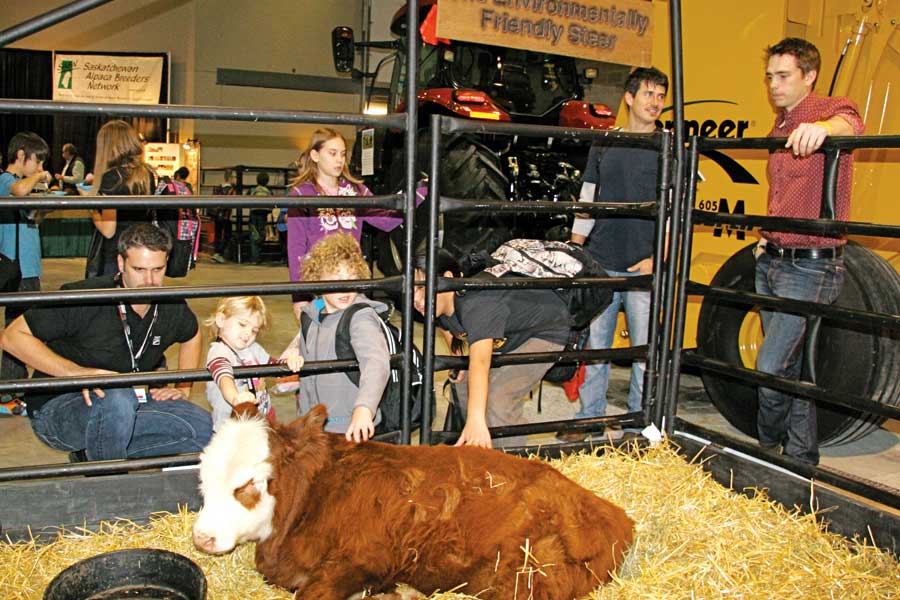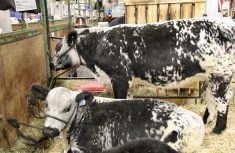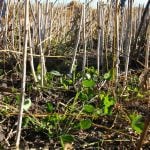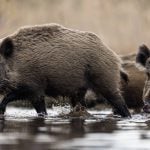As Canada Beef Inc. and the Canadian Cattlemen’s Association prepare to introduce a new online Beef Advocacy Canada training program in 2014, we thought we’d gather some tips on an old hand at telling beef’s story to the younger generation.
Sherri Grant has been managing the beef side of the Agri-ed Showcase at Canadian Western Agribition for 20-plus years now. The showcase hosts an array of interactive displays and activities organized by several agricultural organizations. The beef section is a longstanding initiative of the Saskatchewan Stock Growers Association funded entirely by the producers’ provincial checkoff.
Read Also

The Canadian Cattle Association’s international advocacy efforts
Global ag policies affect Canadian food policy, so the Canadian Cattle Association participates in international and domestic forums
Over the years Grant has seen the showcase move from a small tent to a major display at the CWA’s Family Ag Pavilion that hosts 6,000 students and teachers from Regina and Regina rural school districts and hundreds more who visit the pavilion with their families each November. The exhibit also moves around to Prince Albert, Saskatoon, Yorkton and Swift Current during the year.
“Most messaging we provide is to school students, so we make sure that it links to the curriculum in some way,” says Grant. “It hasn’t changed a lot through the years other than to get more focused. We always talk about how cattle graze land that otherwise can’t be used to produce food and that the reason they can do this is because of their ruminant system of digestion that is able to convert grass to high-quality protein we can use.
“We have to realize that livestock people use different terminology than the general public, so you need to make sure people understand what you mean.”
As an example, when they found the ruminant digestion system seemed like a foreign concept to many students, and many teachers, they started layering the information throughout the showcase so the kids would hear about ruminants at the sheep demonstration and the byproduct demonstration. That was five years ago. “Now they get the difference,” says Grant.
The term bred heifer created some confusion this winter until Grant realized that the students were interpreting it as “bread” heifer and couldn’t understand how you can get bread from a cow. In this crowd, even “heifer” requires an explanation.
That raises a good point for advocates, says Grant. Take the time to really understand what a person is asking you.
From the Country Guide website: Nourishing new farmers
One woman surprised Grant by confiding she is considering a change in her diet because she’d heard that cattle are force fed. Grant told the woman she had never seen cattle being forced to eat in all her years of ranching at Val Marie or her many visits to ranches and feedlots, and asked her to describe how it could be done. The women had to admit she didn’t know and left willing to reconsider her view on a diet change.
“It’s important to try to leave your defensiveness at home and not outright say a person is wrong,” Grant says. “Speak from your experience, provide factual information and let the person know where they can find accurate resources.”
Those resources should include some reliable Internet websites as Grant discovered when she had a student ask her a question for which there was no definitive answer. The student said, “That’s OK, I’ll Google it,” which she found unnerving because there’s no telling what kinds of material will come up in a helter-skelter Google search.
Not surprisingly she has come to appreciate the efforts of teachers with a basic understanding of agriculture. “(They) are more aware of where to find accurate information and much better equipped to help students find resources that will give them the whole picture about where food comes from.”
The biggest challenge with school groups is engaging the children in a discussion. Grant usually starts at the landscape display by asking the children what they see. It’s a good way to gauge their level of understanding about the farm scene and avoid boring them with information they already know, or losing their attention by jumping in over their heads.
She’s still surprised by how many children are unaware that beef and dairy cows only produce milk after they calve and that only the mother feeds the calf.

















